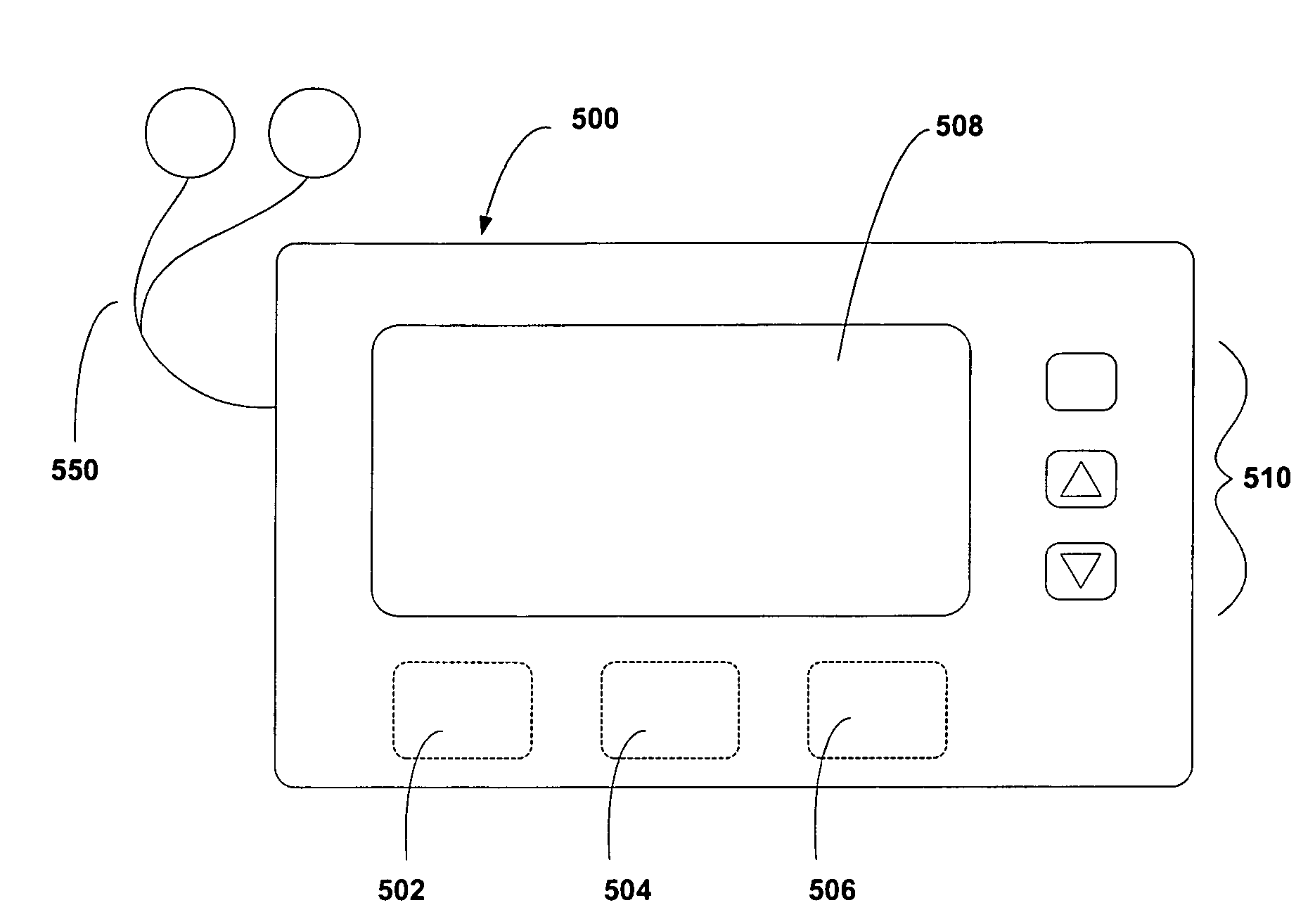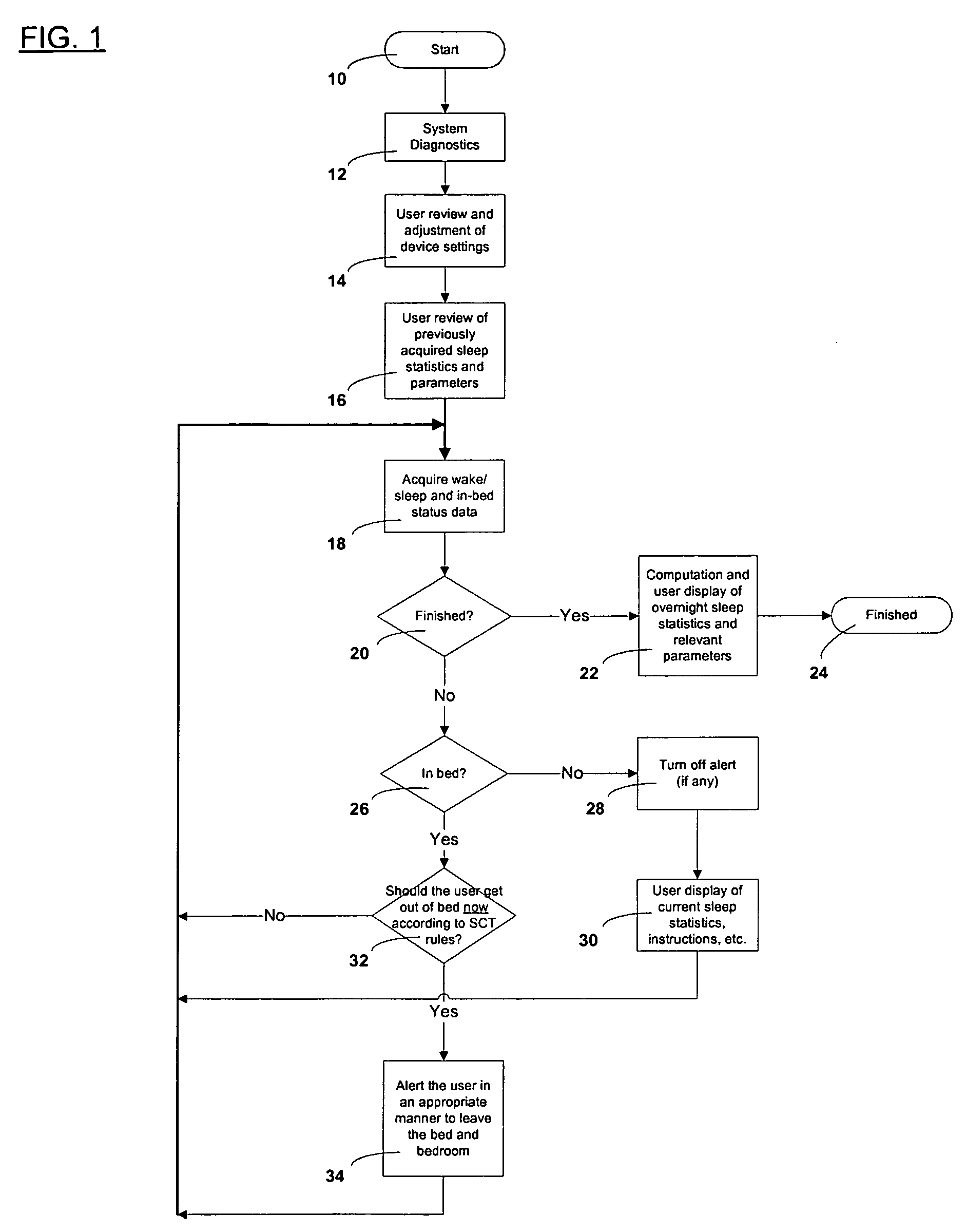Automated insomnia treatment system
a technology of automatic insomnia treatment and insomnia, applied in the direction of diagnostic recording/measuring, impression caps, diagnostics, etc., can solve the problems of insomnia sufferers having difficulty insomnia is difficult to initiate or maintain, and insomnia sufferers have difficulty in falling asleep or staying asleep
- Summary
- Abstract
- Description
- Claims
- Application Information
AI Technical Summary
Problems solved by technology
Method used
Image
Examples
Embodiment Construction
[0060]The present invention employs passive wake / sleep determination means as part of an automated system for those implementing behavioral therapies for treating insomnia that require knowledge of sleep parameters in their implementation. Such behavioral therapies include, for example, stimulus control therapy, sleep restriction therapy and combinations thereof.
[0061]In order to implement those behavioral therapies for treating insomnia that require knowledge of sleep parameters in their implementation, it is necessary to determine if the patient is awake or asleep at regular intervals of time. Highly accurate wake / sleep determination is desirable in order to achieve the best therapeutic results. Furthermore, being able to accurately determine the wake / sleep state continuously or at very closely spaced time intervals is preferred over a coarse sampling of time. This may be achieved using passive wake / sleep determination means that use, for example, EEG, EKG, EOG, actigraphy, body m...
PUM
 Login to View More
Login to View More Abstract
Description
Claims
Application Information
 Login to View More
Login to View More - R&D
- Intellectual Property
- Life Sciences
- Materials
- Tech Scout
- Unparalleled Data Quality
- Higher Quality Content
- 60% Fewer Hallucinations
Browse by: Latest US Patents, China's latest patents, Technical Efficacy Thesaurus, Application Domain, Technology Topic, Popular Technical Reports.
© 2025 PatSnap. All rights reserved.Legal|Privacy policy|Modern Slavery Act Transparency Statement|Sitemap|About US| Contact US: help@patsnap.com



